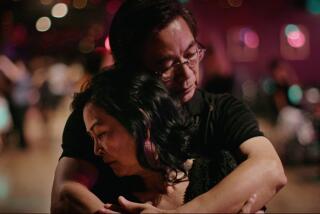Evolving Art’s Square Roots
- Share via
Designated as the American Folk Dance by President Reagan, square-dancing has its roots in northern European folk dance--the English country dance and the French quadrille.
As American pioneers moved westward, the dances went with them and were modified. The caller was added, and the dance evolved into the traditional American square-dance in a rowdy format called the “barn dance”--an image modern square-dancers have since fought to overcome.
What was taught to generations of schoolchildren in gym classes not so long ago was “traditional square-dancing,” and what has evolved over the past few decades is a more elegant format known as “modern western square-dancing.”
In “traditional” square-dancing the music is live, in “western” it is recorded, though it can be accompanied by a singing caller. In the traditional format couples go through the square a pair at a time, in the Western format all eight dancers in a square move simultaneously. There are thousands of standardized steps and complex patterns that dancers follow at the direction of the caller.
For a directory of dances in Southern California, call Associated Square Dancers at (800) 974-6996. For club directories, call Open Squares at (818) 993-4648, or California Square Dance Blue Book at (619) 241-2688. For a national directory of square-dances, call (800) 386-4155.
On the Internet, check out the Western Square Dance home page at https://suif.stanford.edu or the United Square Dancers of America page at https://source.inf.net. There is also a Western Square Dance chat forum on America Online.
More to Read
The biggest entertainment stories
Get our big stories about Hollywood, film, television, music, arts, culture and more right in your inbox as soon as they publish.
You may occasionally receive promotional content from the Los Angeles Times.










